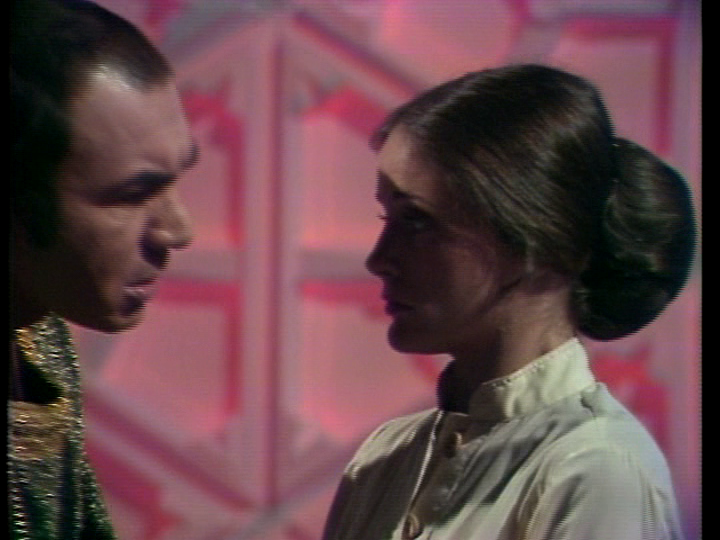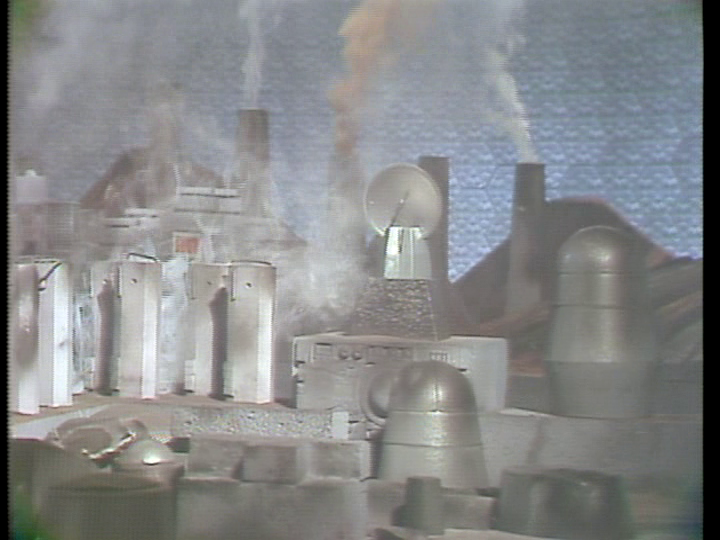Science fiction was still a budding genre on television. Budgets couldn’t match the imagination of creators, creating problems. However, Star Trek had made an impact by 1970, and movies like 2001: A Space Odyssey only whet appetites. There was a demand to be filled. Harlan Ellison aimed to fill that demand with a mini-series. The result, The Starlost, a 1973 TV series that had problems from the outset.
Ellison’s original idea was about a colony ship, the Ark, off course due to damage sustained after an unexpected hit on the vessel. The Ark drifted off course for centuries before the gravitational pull of a class G star puts the ship on a course to destruction. The only hope are three people from one of the Ark‘s biodomes, environments on the ship meant to maintain pieces of old Earth biology and culture. The goal of the three is to find a way to set change the Ark‘s course to safety while dealing with the various cultures of the biodomes, many of which have also lost technology and the knowledge of being on a ship.
The concept is simple but ambitious. The mini-series would have a beginning and an end. The Ark would be saved or doomed. Ellison then shopped the story around. The only taker was a Canadian studio, Glen-Warren Productions. There, the problems began. The studio had never produced a science fiction program before and had a limited budget. Canadian television in the 70s wasn’t known for being groundbreaking and existed solely because of CRTC‘s Canadian content regulations. Canadian broadcasters needed to have a minimum amount of television produced by and featuring Canadians. Ellison’s notes for the biospheres included distances; the studio tried to shorten the distances because the focal distance of the cameras in use wouldn’t extend further. There are more details in the book, Phoenix from the Ashes, but the big stumbling block was that the studio didn’t understand science fiction.
The result, The Starlost. The series begins in the biodome called Cypress Corners, an agriculture community with a strong religious, patriarchal society. Devon, played by Keir Dullea, chafed against his society and explored, discovering the true nature of his home. Such explorations, though, lead to him being shunned. Making things worse, he and Rachel (Gay Rowan) were in love with each other, despite her being betrothed to Garth (Robin Ward), a blacksmith. Devon reveals the truth to the citizens of Cypress Corners, leading to him being chased out of the biodome with Rachel following him and Garth following her.

Early in their explorations, they find a sphere projector, the interface to the Ark‘s main computer. the computer host (William Osler) and discover that their home and the entire Ark is in danger because of a class-G star. If they cannot get the ship’s reactors online, the Ark will be pulled into the star. Thus begins their quest. The trio do find the bridge early, to find it damaged and unpopulated. The search finds possible help, but each time there are problems. Some biodomes have their own problems, with the trio being the catalyst to change in the environment. As the series goes on, the episodes start straying from the core concept. Odd ideas pop in and out, such as aliens, that tend to leave the viewer wanting more with no further explanation.

The core concept of The Starlost is solid. It was Harlan Ellison; he may have been abrasive, but he knew science fiction. The same goes for executive producer Douglas Trumbull, who contributed to the effects of 1968’s 2001: A Space Odyssey and directed 1972’s Silent Running. The core cast included Keir Dullea, who starred in 2001, with Gay Rowan and Robin Ward being decent Canadian actors. The guest cast included the likes of Canadians John Colicos, Lloyd Bochner, and Donnelly Rhodes, plus Barry Morse and Walter Koenig, all of whom were capable of treating the material with the seriousness it deserved, even if some scenery was chewed in the process.

The core problem was budget. The series didn’t have one big enough. The Ark looked impressive on television screens at the time, but close in passes started to show the limitations. Reuse of props, though, made sense; the Ark was built with standards in mind, so all the chairs, all the consoles, all the irises looking the same through a set redress made sense. There were times when the budget wasn’t enough, making the 70s-era Doctor Who and Danger!! Death Ray! look like special effects wonders. The problems with the studio led Ellison to use his Cordwainer Bird pen name as a way to show that he was not happy.

The distance between Toronto and Los Angeles also caused problems. Ellison wasn’t willing to commute to Toronto, so there wasn’t a steady hand around to keep the writing staff focused. Later episodes were closer to science fiction versions of Glen-Warren’s better known series, The Littlest Hobo, with Devon, Rachel, and Garth in the role of the Hobo. The leads were catalysts for change, but not the cause nor the vehicle of it.
If The Starlost were to be remade, the biggest fix is budget. Today, it is possible ti use CGI for less than practical effects were in the 70s in today’s dollars. The Ark, which looked sprawling, can diminish into the distance, with fly-bys being more detailed than what they were in the series. The model of the Ark is impressive, especially for the era, but it wasn’t designed for close ups. A larger budget would allow for filming in appropriate environments. Cypress Corners could be filmed outside instead on a stage. The biodomes could look larger, thanks to today’s technology. Still, a unified design is needed for the Ark‘s interiors, but industrial grey can be swapped out. However, the sphere projectors should be kept, even in an updated version. A voice of doom is needed to play the role of the host computer.
The next biggest fix is returning to the original idea of mini-series. The Ark is in danger. There is enough time to get the Ark back on course, but there is a time crunch. The leads can’t go exploring every biodome between them and the auxiliary bridge; the longer they take, the harder it gets to fix the Ark‘s course. Once the Ark is no longer in danger of burning up in the nuclear fires of a star, finding a new Earth becomes the next goal, so a sequel series can be made if wanted. But the Ark can’t be left in limbo; audiences no longer accept series without a proper end.
The above ties into the next fix – writing staff. A showrunner is needed to keep the series focused. With a mini-series, the idea of knowing where the show is going makes it easier to keep the writers all in the right direction. This will also help when dealing with guest cast; the characters need a reason to be introduced. With a focused approach, the non-lead characters will either help the leads with their quest or delay, but the leads won’t be floundering. The focus will also help when dealing with the different biodome cultures and technology. Some will slip backwards; others will maintain what they can. Working out some biodomes in advance and figuring out if they’re aware of the problem or not can help with the creation of episodes.
Could there be a remake of The Starlost. It depends on the rights. Assuming the Ellison estate holds them, it may be a matter of price and control. If it’s Glen-Warren, the production company has been bought by Bell Media, who also owns a number of broadcast and cable stations. In this case, it may just be the effort of bringing a proposition to Bell Media or one of their stations such as CTV Sci-Fi (née Space) and see if there’s a bite. The series does own some name space, even if it’s being known as one of the worst science fiction TV shows ever made.
The Starlost, though, has a strong core idea, thanks to Harlan Ellison. The problem was execution, not concept, so there is room to live up to the original idea behind the terrible.
Post Tags: Cordwainer Bird Harlan Ellison Let's Remake The Starlost




